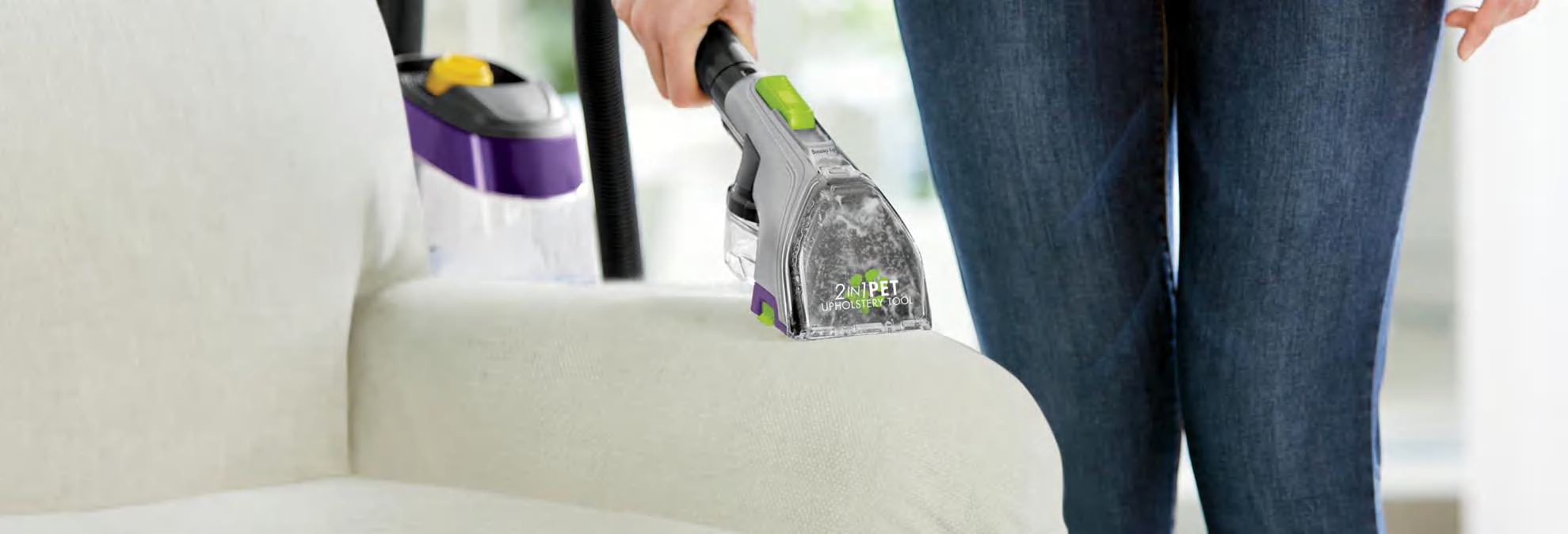
Choose the Right Carpet Cleaner for Your Home

Home & Appliances Writer
When dirt gets embedded in your carpets, removing it can be a challenge—but not if you have a carpet cleaner. This powerful machine can get rid of even the most stubborn grime, like muddy paw prints, red-wine spills, or years of accumulated dust and soil.
While you have the option to hire a service to clean your carpets or even rent a carpet cleaner to do the job yourself, it may make sense for you to own one outright. Here’s what to consider when you’re thinking about buying a carpet cleaner, how to choose one, and how we test the models in our ratings to find the very best.
What Makes a Good Carpet Cleaner?
The best carpet cleaners—the ones that excel at lifting embedded dirt—have larger, more powerful motors and spinning bristles that help agitate the soil in your carpet. They can also dry pretty well (by lifting dirty water out of your carpet along with the soil), and the most convenient ones come with a range of helpful hose attachments: pet tools, crevice tools, and more. And while all carpet cleaners are pretty noisy, some work a little more quietly than others.
Almost all the full-sized models do a better job of removing dirt than the smaller portable models in our extensive testing, described below. This is partly because the portable models we’ve tested, which rely exclusively on a hose attachment for cleaning, don’t have mechanical bristles that spin on their own, which means you’ll have to do more manual scrubbing. They also lack the motor power of full-sized models.
Rent or Buy?
You can rent a carpet cleaner from a home improvement store like Home Depot for about $40 per day. But that comes with the hassle of hauling the cleaner home, which might not be easy, considering that a lot of carpet cleaners are heavy.
While the initial cost of buying a carpet cleaner is higher than renting one—models in our ratings range from about $100 to almost $600—if you have large carpets or a lot of carpets to clean, it may make the most sense to buy one. After a number of uses, it’ll pay for itself.
Before you buy one, though, check the warranty for your carpets or the carpet manufacturer’s website for suggestions on how often you should clean. Otherwise, you could damage the carpet or void its warranty.
What to Keep in Mind When Choosing and Using a Carpet Cleaner
Full-Sized or Portable?
If you want to give your large area rugs a full, deep clean on a regular basis, you should buy a full-sized model. Its wide, motorized brushes are best for cleaning a lot of surface area and tackling long-embedded dust and dirt. It will also usually come with hoses to help you handle smaller spaces, stairs, upholstery, and the occasional targeted mess, like a coffee stain or a pet’s accident.
But if you mainly intend to clean spills and stains as they arise—or you specifically want a carpet cleaner to clean upholstery or the interior of your car—a portable model may be best for you. They’re much smaller and more compact, so you can carry them more easily where they need to go. While they don’t match the cleaning abilities of full-sized models, they’re designed for a different purpose, and they’re more than up to the task of spot-cleaning.
Focus on Features
Some carpet cleaners have one tank with two chambers, one for fresh cleaning solution and one for dirty water, while others have two separate tanks for each. Separate tanks are easier to use because you may find yourself needing to refill the cleaning solution, and that way you only need to deal with that specific tank. Some models also have dispensers that add the cleaning agent to clean water so that you don’t have to measure out a tank of solution yourself.
Choose models that have hose attachments suited to what you want to clean. Some models have pet-specific attachments, which have rubber prongs that help collect pet hair and handle other pet messes. Some have crevice tools to help you reach tight spaces or clean upholstery delicately. There are also especially wide attachments to help you cover more ground when you’re using the hose.
Consider the Size of Your Home—and the Carpet Cleaner
While carpet cleaners tend to have long cords and hoses, not every model will be ideal for every space. If you have a very large home, a longer hose will probably be a huge help because it means you won’t have to move the machine around as much while you’re cleaning. And if you have stairs, check that the cord and hose length will allow you to clean them without perching the carpet cleaner on a narrow step.
You’ll also want to look at the weight of the carpet cleaner both empty and with a full tank. A full-sized carpet cleaner with a full tank of solution can weigh over 65 pounds, which makes it difficult to move around or carry up and down stairs. This is less of a concern for portable carpet cleaners, but the heaviest portable model in our tests still weighs 19 pounds with a full tank.
Take Precautions
Working with water and electricity requires extra care, so if possible, plug the machine into an outlet with a ground-fault circuit interrupter. Wear hearing protection when using any machine for an extended period of time. Carpet cleaners, even portable models, can reach 90 decibels in volume, which can damage your hearing with prolonged exposure. And to be extra safe, don’t walk on carpet or place furniture on it until it’s completely dry.
Vent Properly
Some cleaning solutions and stain removers for carpet cleaners emit fumes, so be sure to open windows and run fans when cleaning. That’s especially important if someone in your home has a respiratory problem, such as asthma.
If You Go Pro …
If you decide to hire a carpet-cleaning service instead of renting or buying your own carpet cleaner, select a company approved by the Institute of Inspection, Cleaning, and Restoration Certification, a nonprofit organization, to ensure that it carries liability insurance and employs certified technicians. Make sure they vacuum before deep-cleaning and ask about spot removal. Get a detailed written estimate for the cost, check references, and be sure to get an invoice.
How We Test Carpet Cleaners
It takes three days to put one carpet cleaner through our battery of cleaning performance tests. To assess both full-sized and portable carpet cleaners, our engineers soil large swatches of off-white nylon carpet with red Georgia clay, and then run a cleaner over the carpet for four wet and four dry cycles, simulating how you’d clean a particularly dirty spot on a well-trafficked carpet. Then they repeat the test on two more swatches.
Over the course of the test, our experts use a colorimeter, a device that measures the absorption of light wavelengths, to take 60 readings of each carpet per test: 20 in its clean state, 20 after it’s been soiled, and 20 after it has been cleaned. Sixty readings each on three swatches make a total of 180 readings per model. Based on how much color is left, we score how well the carpet cleaner has removed the soil for our cleaning score.
We do a similar test to assess drying performance, applying a set amount of water to carpet swatches and running a dry pass with each carpet cleaner over the carpets. Our testers measure the weight of the wet carpet and the weight of the carpet after it’s been “dried” with the cleaner (the cleaners don’t fully dry the carpet, but the good ones can pick up a decent amount of water), and assign drying scores depending on how much water the cleaner picks up.
We also evaluate how loud each carpet cleaner is by taking readings in both decibels and sones. The scores for convenience are based on such factors as the cleaner’s weight, the capacity of its water tanks, and the number of additional attachments that come with it.
In our ratings, you’ll notice that the scores for portable carpet cleaners are lower than almost all of the scores for full-sized models. That’s because we put the portables through the same rigorous tests as the full-sized cleaners, tests designed to evaluate how well a carpet cleaner can extract deeply embedded soil from a carpet. But portable carpet cleaners are really designed for a different job: spot-cleaning smaller stains. So while their scores are low compared with full-sized models, they’ll perform much better on the kinds of messes they’re designed for.
Types of Carpet Cleaners
You’ll find two types of carpet cleaners in our ratings: full-sized models and portable models, which are designed for slightly different situations and tasks. Here’s what you should know about each type of cleaner.
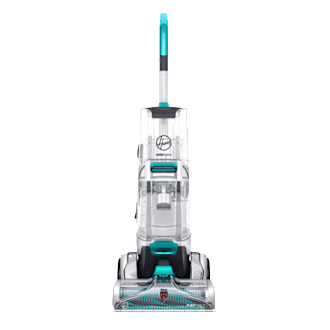
Full-Sized Carpet Cleaners
These carpet cleaners are designed to give large carpets a deep clean. They allow you to use a cleaning solution from one tank (made up of water and a cleaning agent) on your carpet, scrub thoroughly to loosen embedded soil, and then pick up the dirty water in another tank. In addition to their large motorized or mechanical bristles, they also usually have a hose with various attachments for cleaning smaller spaces or stains. They can be heavy, especially with a full tank of solution, though they have wheels to help you maneuver them.
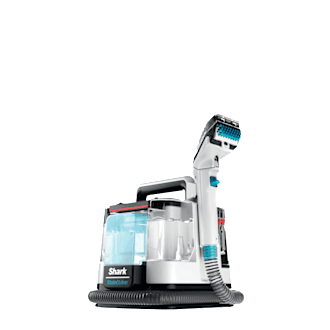
Portable Carpet Cleaners
These are compact, light versions of carpet cleaners designed principally for spot-cleaning. They rely on a hose with various attachments suited for different types of spaces and soil. While they aren’t as powerful as full-sized cleaners (either in terms of their motor or in extracting embedded dirt) and their tanks tend to be smaller, they’re much easier to maneuver when you need to clean up a small mess or spill.
A Pile of Features
Carpet cleaners come with a range of features, some that will come in handy no matter what and others that will be more or less useful to you depending on what you need to clean and the size of your home. Here are some of the features you should consider when you’re looking at models.
- 1
- / 6
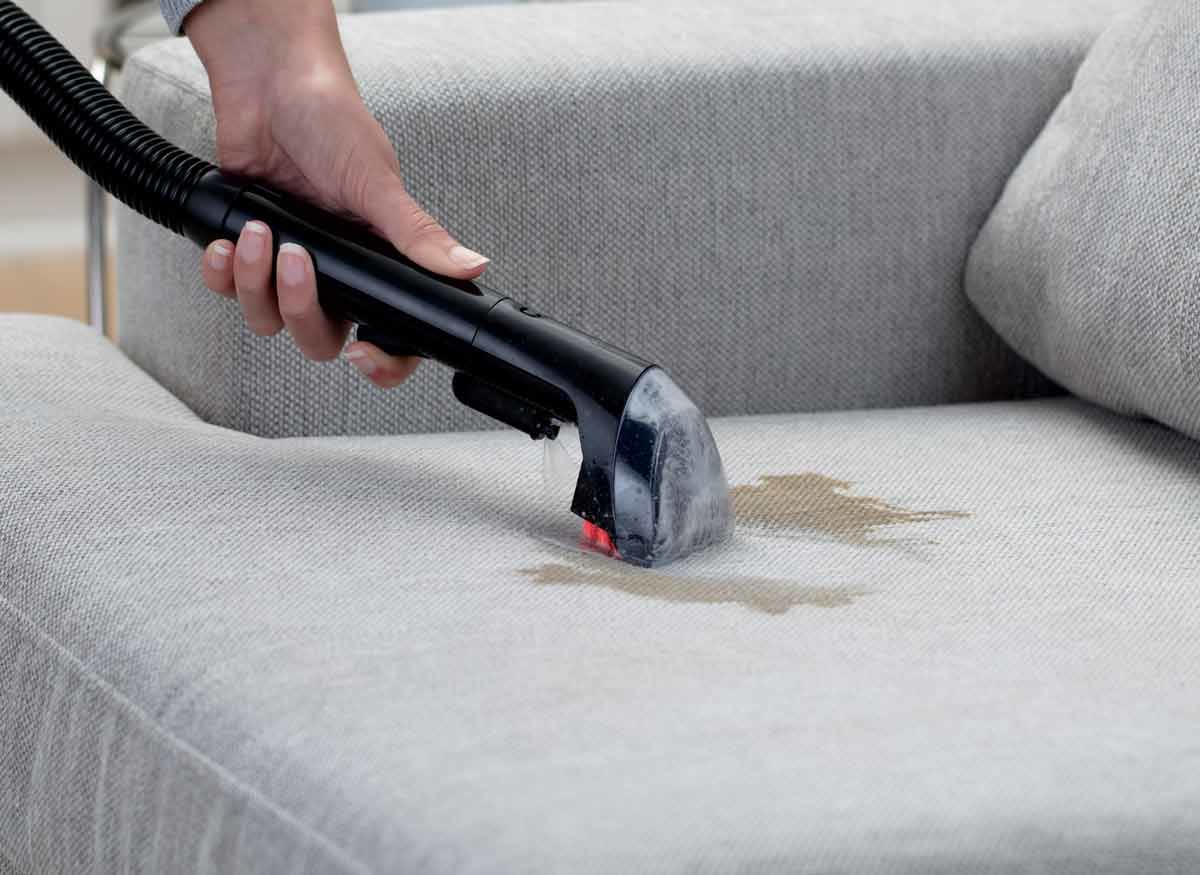
Hose Attachments
Upright and portable models can come with a variety of hose attachments that let you clean tight spaces, upholstery, stairs, and particular messes. Some common attachments are crevice tools, pet tools (which are often designed to help pick up pet hair), and attachments of different widths to suit different spaces.
PHOTO: BISSELL
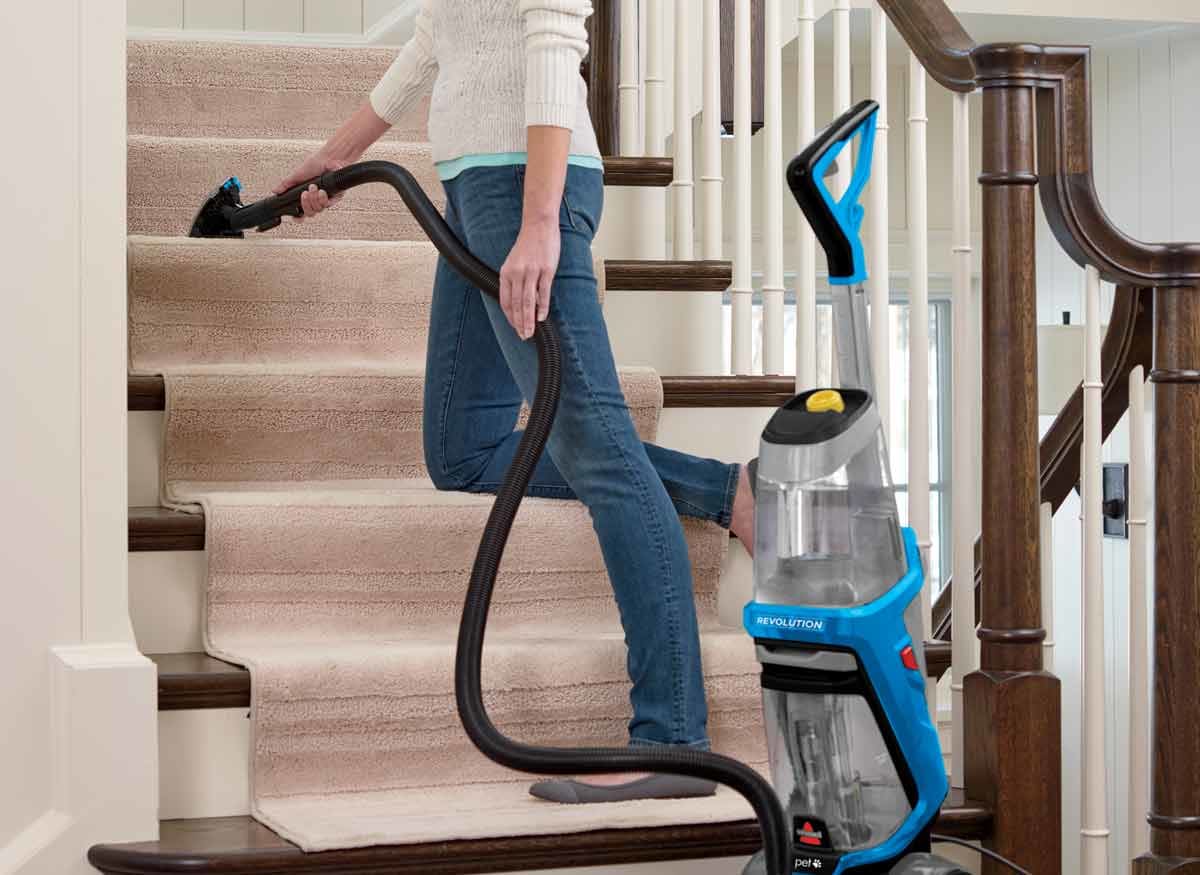
Long Hoses
The heavier the cleaner, the harder it is to maneuver. A long vacuum hose can reach around furniture, into tricky spaces, and up flights of stairs so that you don’t have to lug the carpet cleaner around as much.
PHOTO: BISSELL
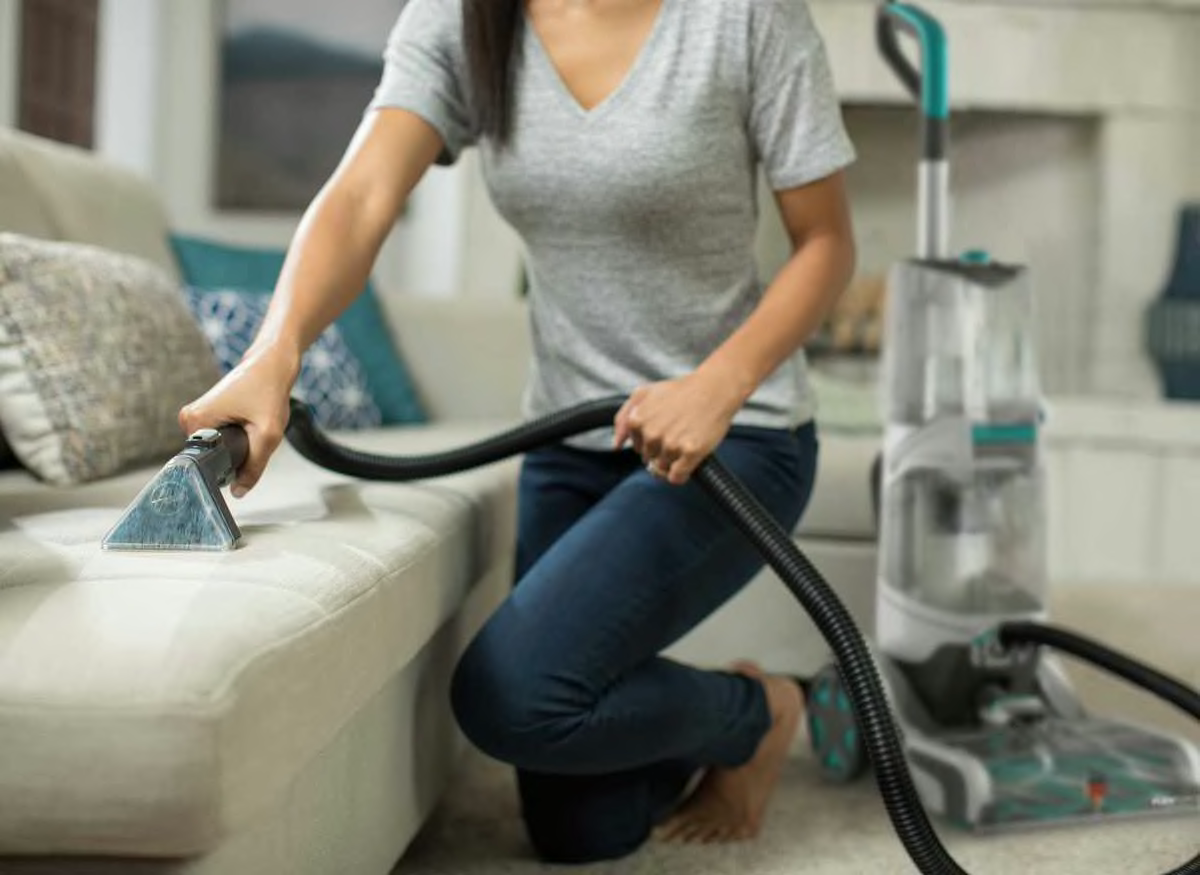
Automatic Tank Shutoff
Some cleaners feature a sensor-operated cutoff that stops an extractor’s suction when the tank that stores dirty solution is full.
PHOTO: HOOVER
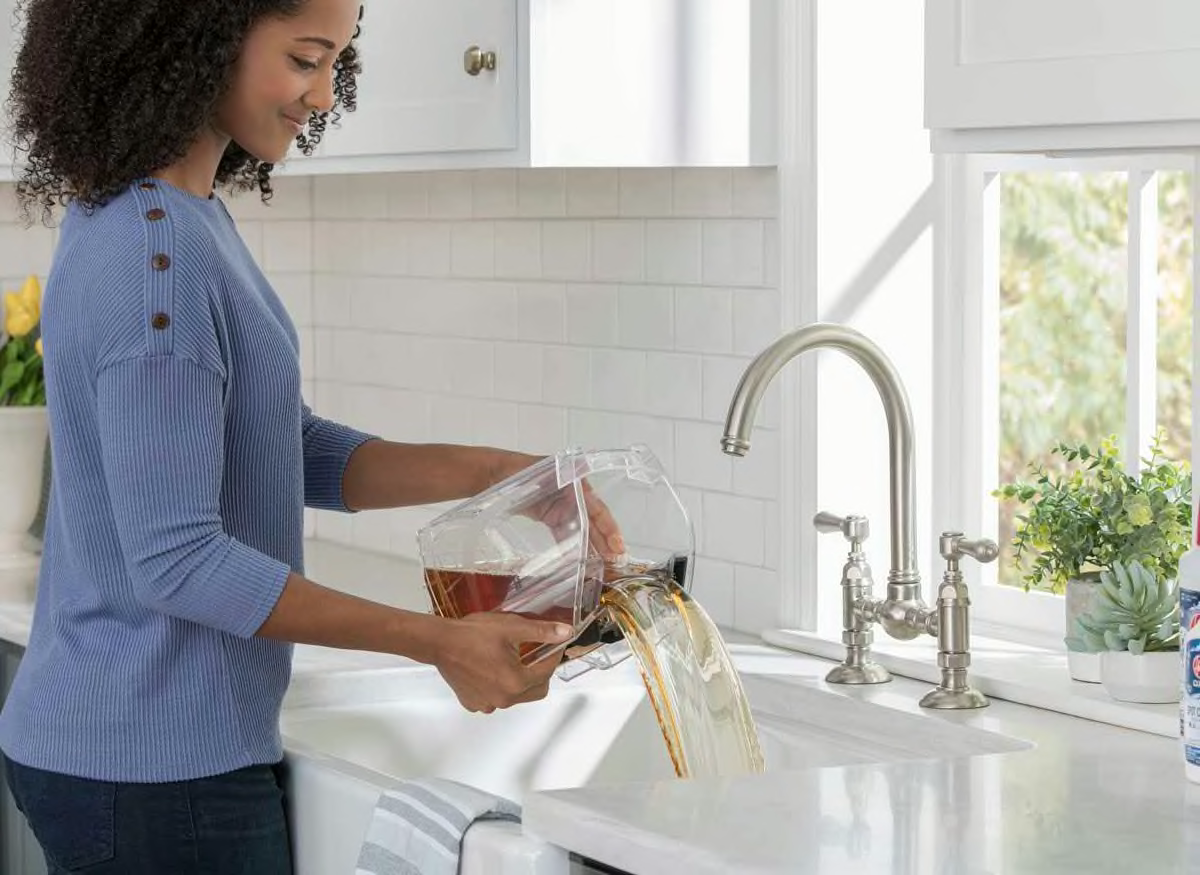
Large Tanks
The larger the cleaning-solution tank, the less often you’ll need to refill it. That’s handy if you clean a lot of carpet at a time—though the more liquid, the heavier the machine will be to maneuver. Tanks in portable carpet cleaners typically have smaller capacities than full-sized cleaners, but some can hold up to a gallon of liquid.
PHOTO: HOOVER
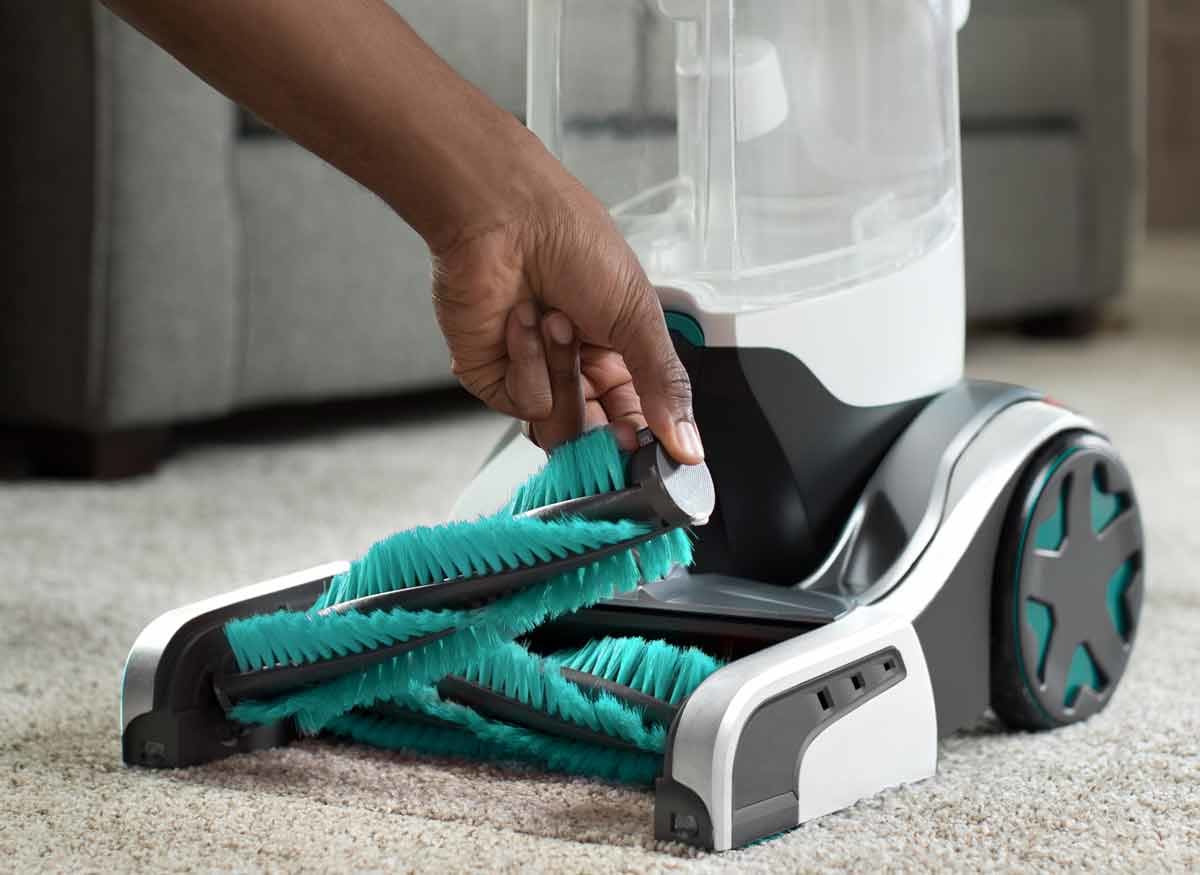
Moving Brush(es)
A motorized brush that moves on its own tends to give a more aggressive scrub than a brush that only moves as you push the machine, or a fixed brush. Portable cleaners don’t have brushes with mechanical action, which means you’ll need to use a little more elbow grease to scrub out stains.
PHOTO: HOOVER
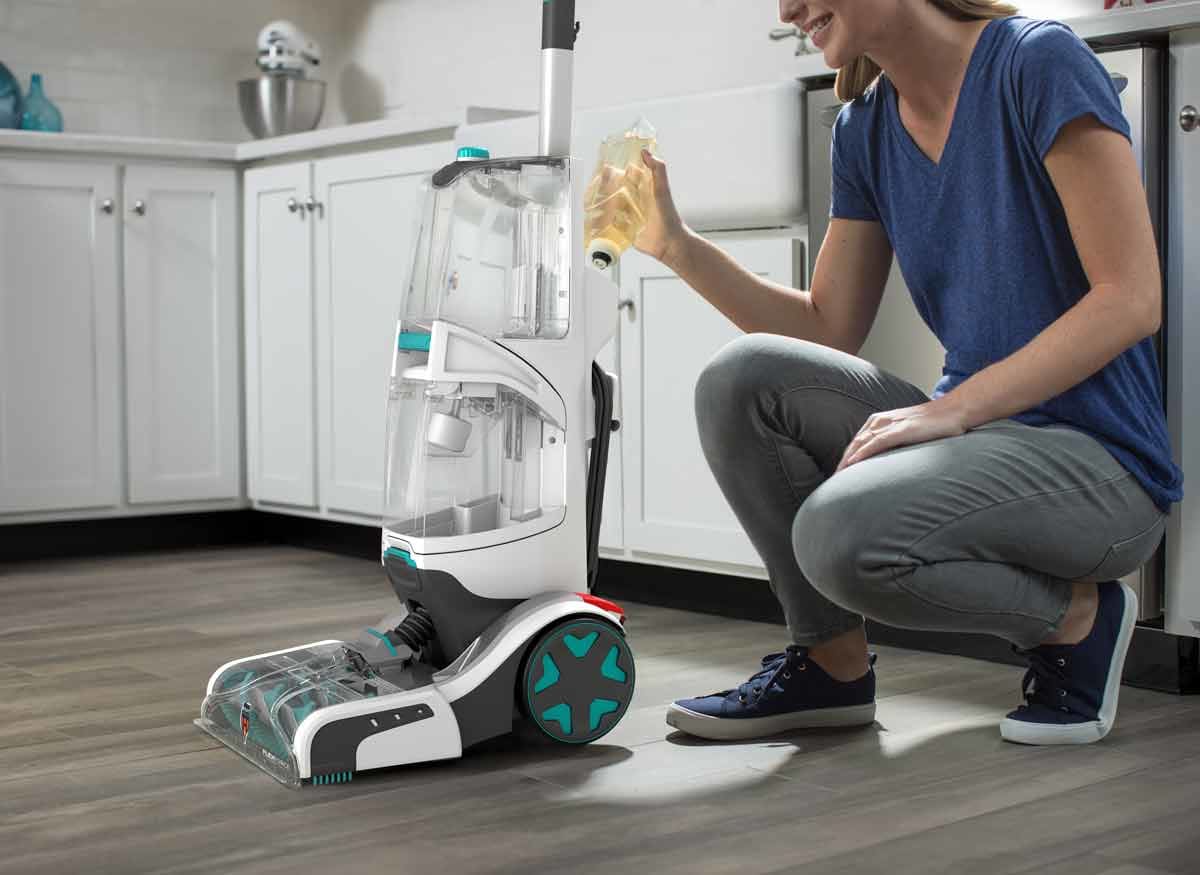
Separate Soap Dispenser
Some carpet cleaners have dispensers that automatically add the right amount of detergent to the clean water in your tank so that you don’t have to measure out the solution yourself. They can also shut off to allow you to rinse the carpet with fresh water.
PHOTO: HOOVER
Hose Attachments
Upright and portable models can come with a variety of hose attachments that let you clean tight spaces, upholstery, stairs, and particular messes. Some common attachments are crevice tools, pet tools (which are often designed to help pick up pet hair), and attachments of different widths to suit different spaces.
PHOTO: BISSELL
Long Hoses
The heavier the cleaner, the harder it is to maneuver. A long vacuum hose can reach around furniture, into tricky spaces, and up flights of stairs so that you don’t have to lug the carpet cleaner around as much.
PHOTO: BISSELL
Automatic Tank Shutoff
Some cleaners feature a sensor-operated cutoff that stops an extractor’s suction when the tank that stores dirty solution is full.
PHOTO: HOOVER
Large Tanks
The larger the cleaning-solution tank, the less often you’ll need to refill it. That’s handy if you clean a lot of carpet at a time—though the more liquid, the heavier the machine will be to maneuver. Tanks in portable carpet cleaners typically have smaller capacities than full-sized cleaners, but some can hold up to a gallon of liquid.
PHOTO: HOOVER
Moving Brush(es)
A motorized brush that moves on its own tends to give a more aggressive scrub than a brush that only moves as you push the machine, or a fixed brush. Portable cleaners don’t have brushes with mechanical action, which means you’ll need to use a little more elbow grease to scrub out stains.
PHOTO: HOOVER
Separate Soap Dispenser
Some carpet cleaners have dispensers that automatically add the right amount of detergent to the clean water in your tank so that you don’t have to measure out the solution yourself. They can also shut off to allow you to rinse the carpet with fresh water.
PHOTO: HOOVER
Carpet Cleaner Brands
Bissell offers dozens of upright, canister, and compact carpet cleaners to address the preferences and needs of various consumers, such as pet owners. The company also makes upright, canister, hand, and stick vacuums, along with bare-floor cleaners and carpet-cleaning formulas. Bissell products are available at a variety of mass merchants and home centers, including Home Depot, Kmart, Lowe’s, Target, and Walmart.
Hoover introduced its first vacuum in 1907 and has established itself as one of the most recognizable brands in the country. It’s owned by TTI Floor Care, which also makes Dirt Devil. The company markets several upright carpet cleaners. Hoover also makes upright and canister vacuums, hand and stick vacuums, bare-floor cleaners, central vacuums, and an outdoor sweeper. Products are available at a wide variety of mass merchants and home centers, including Home Depot, Kmart, Lowe’s, Target, and Walmart.
Rug Doctor is a company more than 40 years old that specializes in carpet cleaners and cleaning supplies. You can rent or buy Rug Doctor carpet cleaners; for purchases, prices range from $529 to $599. To rent, you can use the vendor search tool on Rug Doctor’s website to find the nearest retail location with its machines. Prices for renting start at $20 for 4 hours and go up to $50 for a two-day rental, depending on the machine.



























